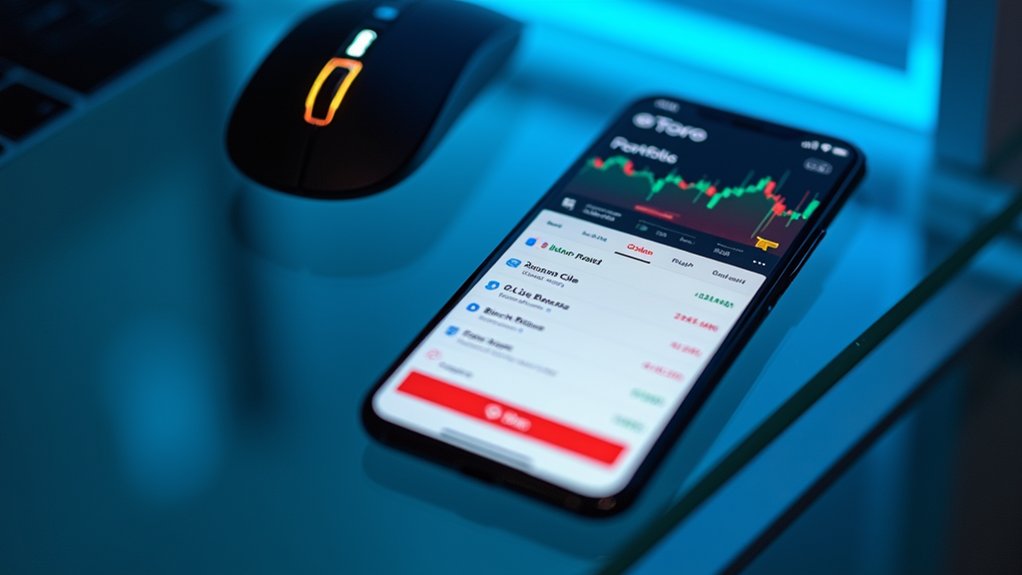Cryptocurrency mining validates blockchain transactions through computational problem-solving, securing networks via proof-of-work mechanisms. Specialized hardware, particularly ASICs, competes to find correct cryptographic hashes for transaction blocks, with efficiency measured by hash rates. Mining difficulty adjusts periodically to maintain consistent block times despite fluctuating network power, while miners receive rewards of newly minted coins and transaction fees. Many participants join mining pools to combine resources, ensuring more consistent returns amid the highly competitive landscape. Further exploration reveals the economic and security consequences of this foundational blockchain process.

While digital currencies have transformed the financial landscape in recent years, cryptocurrency mining remains a vital yet complex process that underpins the entire blockchain ecosystem. At its essence, mining involves validating transactions through competitions where miners solve intricate mathematical puzzles using substantial computational resources, ultimately securing the decentralized network through a mechanism known as proof-of-work.
The process begins when transactions are grouped into blocks for inclusion in the blockchain ledger, with miners racing against one another to find the correct cryptographic hash for each block, thereby confirming transactions as permanent and immutable once verified.
The mining process requires specialized hardware, primarily Application-Specific Integrated Circuits (ASICs), designed exclusively for peak mining performance, which calculate trillions of hashes per second in attempts to solve these cryptographic puzzles. This computational power, measured in hash rate, directly correlates with mining efficiency, since higher hash rates enable faster calculation attempts, although this comes with significant energy consumption concerns that have sparked ongoing environmental debates. For those starting a mining business, selecting high-performance GPUs or ASICs represents one of the most crucial investment decisions.
Every 2,016 blocks, approximately every two weeks, the network automatically adjusts mining difficulty to maintain a consistent average solve time of ten minutes per block, guaranteeing systematic cryptocurrency issuance regardless of fluctuating network hash power. This difficulty adjustment ensures the time between blocks remains consistent despite changing network conditions.
Miners are economically incentivized to participate through block rewards—newly minted cryptocurrency plus transaction fees—creating a self-sustaining security model that protects the network against double-spending and other malicious attacks. These rewards undergo "halving events" approximately every four years, reducing the block subsidy by 50% each time, which significantly affects mining profitability alongside electricity costs and hardware investments. The next Bitcoin halving will further reduce rewards from the current 6.25 BTC to only 3.125 BTC per block.
Many miners join mining pools to combine resources and distribute rewards more consistently, hedging against the increasingly competitive nature of the industry. This entire consensus mechanism guarantees decentralized agreement without central authority, creating transparent, auditable ledgers that maintain integrity through cryptographic security and network redundancy, effectively preventing single points of failure while creating immutable transaction histories.
Frequently Asked Questions
What Is the Environmental Impact of Crypto Mining?
Cryptocurrency mining generates significant environmental consequences, consuming approximately 63 terawatt-hours annually, comparable to Poland's electricity usage, with 85% derived from fossil fuels in U.S. operations.
This energy-intensive process produces substantial carbon emissions, with a single Bitcoin transaction generating CO₂ equivalent to driving 1,600-2,600 km.
Additionally, mining operations create concerning levels of PM₂.₅ air pollution affecting 1.9 million Americans, while also generating substantial e-waste from rapidly obsolete specialized hardware.
Can I Mine Crypto on My Regular Laptop?
Mining cryptocurrency on a regular laptop is technically feasible but economically impractical.
Standard laptops lack the specialized computing power necessary to compete with purpose-built ASIC miners, resulting in negligible earnings that typically fail to offset electricity costs.
Additionally, the intensive processing requirements place substantial strain on laptop hardware, potentially causing overheating, accelerated component degradation, and permanent damage.
For educational purposes, CPU-optimized cryptocurrencies like Monero offer marginally better efficiency than Bitcoin mining on consumer-grade hardware.
Is Crypto Mining Still Profitable for Individual Miners?
Profitability for individual miners depends on several critical factors, including electricity costs, which vary substantially across regions, hardware efficiency, and cryptocurrency price volatility.
While large-scale operations dominate the industry due to economies of scale, individuals can still achieve profitability through strategic approaches like joining mining pools, utilizing energy-efficient ASICs, operating in jurisdictions with favorable regulations, and implementing renewable energy solutions to mitigate operational expenses, particularly since network difficulty continues to increase.
How Much Electricity Does Mining a Single Bitcoin Consume?
Mining a single bitcoin currently consumes approximately 155,000 kWh of electricity using modern, efficient ASIC hardware.
This substantial energy requirement, equivalent to several months of an average household's consumption, varies depending on mining hardware efficiency, cooling requirements, and network difficulty adjustments.
While some operations utilize renewable energy sources (52.4% industry-wide), including hydropower (23.12%) and wind (13.98%), the overall environmental impact remains significant compared to traditional financial transaction systems.
Are Some Cryptocurrencies More Eco-Friendly to Mine Than Others?
Some cryptocurrencies employ considerably more eco-friendly consensus mechanisms than traditional mining.
Proof of Stake currencies like Cardano, Algorand, and Hedera Hashgraph consume minimal energy compared to Bitcoin's Proof of Work system.
Remarkably, Algorand produces near-zero CO₂ emissions per transaction (0.0000004 kg), while Ripple uses 0.0079 kWh per transaction—approximately 90,000 times more efficient than Bitcoin.
Many projects further reduce environmental impact through renewable energy partnerships and carbon offset programs.









